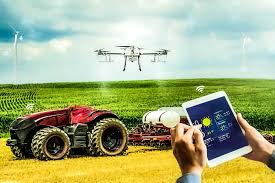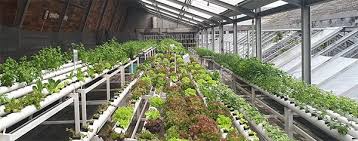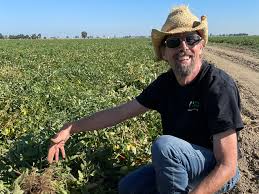The concept of Research-Extension-Farmer Linkage is vital for promoting agricultural development. It connects research findings with practical farm-level applications and ensures that the needs of farmers are communicated to researchers. This relationship is essential for enhancing productivity and addressing challenges faced by farmers.
Read Also: Burmese Cat Breed (Felis catus) Description and Complete Care Guide
The Concept of Agricultural Technology

Technology refers to the application of knowledge for practical purposes (Swanson, 1997). It is used to improve human conditions, manage the environment, and support socio-economic activities. Agricultural technology can be categorized into two main types:
1. Material Technology: This refers to knowledge embedded in products such as tools, agrochemicals, equipment, improved plant varieties or hybrids, and improved animal breeds (e.g., semen from progeny-tested sires used for artificial insemination).
2. Knowledge-Based Technology: This involves technical knowledge, management skills, and processes required for successful crop or livestock production. The transfer of material technology is relatively straightforward, involving the production, distribution, and sale of seeds, implements, agrochemicals, and other inputs.
On the other hand, disseminating knowledge-based technology and management skills to large numbers of poorly educated farmers across different ecological zones presents more challenges.
Knowledge-based technologies, such as improved crop or livestock management practices, integrated pest management (IPM), and soil and water management, are typically taught through vocational training programs or disseminated through public extension systems. As a result, material and knowledge-based technologies are often closely related.
Categories of Agricultural Technology

Understanding the different categories of technology helps define the roles of research, extension, input suppliers, and other system actors in the technology transfer process. Each category follows different pathways for reaching farmers. Some key categories include:
1. Crop Technology: Includes genetic improvements (improved varieties or hybrids), crop management practices, plant protection methods, and cropping systems.
2. Livestock Technology: Comprises genetic improvements (breed improvement), livestock management practices, animal health practices, and forage or range management.
3. Other Agricultural Technologies: Farming systems, soil and water management practices, farm mechanization, agroforestry, post-harvest technology, and farm management.
Both hardware and software components are involved in these technologies. For example, a new crop variety (material technology) requires complementary agro-economic practices, such as pest management, to be fully effective.
Similarly, improved livestock breeds require enhanced management practices, including better nutrition, housing, and health practices. Therefore, identifying and addressing constraints within these systems is key to improving the flow of technology to farmers.
Research-Extension-Farmer Linkage
Research and extension are two critical parts of agricultural support services. Research must focus on addressing farmers’ needs, while extension agents work directly with farmers to identify problems that serve as inputs for further research.
This connection ensures that research is relevant to farmers’ challenges, and extension agents can effectively communicate solutions back to the farmers.
Communication in Research-Extension-Farmer Linkage
A two-way communication system between farmers, extension agents, and researchers is crucial for success. Information flows from farmers to extension agents, who then relay it to researchers. After research results are generated, the information is passed back to farmers through extension agents.
As noted by Baharsjah (1985), communication must account for the varying needs and education levels of all three groups involved.
To promote agricultural development, information must be presented in a form that is understandable and usable at the farm level. Researchers often lack the skills to translate their findings into a format that farmers can readily use.
Extension agents play a vital role in bridging this gap by adapting research findings into practical recommendations suited to farmers’ resources and understanding.
Read Also: Complete List of Different Types of Cat Breeds
Models of Research-Extension-Farmer Linkage

There are two primary models of research-extension-farmer linkage:
1. Unified Model: In this model, research and extension functions are housed within the same institution. For example, in the United States, land-grant universities combine research, extension, and teaching roles. This model works best when farmers are well-educated, have good communication infrastructure, and are supported by a viable commercial sector that provides inputs and knowledge.
2. Separate Institution Model: In countries like Nigeria, research and extension are in separate institutions. Extension services are provided by state Agricultural Development Projects (ADPs), which collaborate with research institutions and universities.
These ADPs are effectively linked to both the research bodies and the farmers. Extension agents visit farmers regularly, participate in monthly technical review meetings (MTRMs) involving researchers, subject matter specialists, and extension personnel, ensuring that research findings are translated into practical recommendations for farmers.
This article explains the role of technology in improving farmers’ productivity and highlights the importance of effective linkages between research, extension, and farmers.
Successful agricultural development depends on strong connections between these three key players, allowing for the efficient transfer of knowledge and solutions to real-world farming challenges. Without this coordination, significant progress cannot be made in improving agricultural practices at the farm level.
Do you have any questions, suggestions, or contributions? If so, please feel free to use the comment box below to share your thoughts. We also encourage you to kindly share this information with others who might benefit from it. Since we can’t reach everyone at once, we truly appreciate your help in spreading the word. Thank you so much for your support and for sharing!
Frequently Asked Questions
We will update this section soon.

